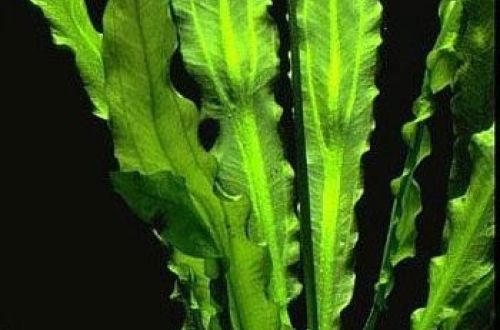
Schismatoglottis
Schismatoglottis, scientific name Schismatoglottis roseospatha. A close relative of Bucephalandra. Originally from Southeast Asia from the island of Borneo (Kalimantan). In nature, it will grow along the banks of forest streams and rivers, firmly rooted in snags, rocks, and stones.
Outwardly similar to Anubias angustifolia. The plant develops a creeping stem. The leaves are narrow-oval or narrow-lanceolate, dark green. The edge is slightly wavy. Under water, tiny silvery specks begin to be visible on the surface of the leaf blades – these are stomata. The long petioles are reddish-brown in color. The roots are located along the entire creeping stem.
Although Schizmatoglottis in nature spends most of its time on land in a moist substrate, it can be used as a fully aquatic aquarium plant. In the immersed state, the height of the sprouts usually does not exceed 8 cm, since the leaves are located low above the ground.
When grown in an aquarium, it should be anchored to rocks, driftwood, or rooted in rough rocky/pebbly soil.
Planting in a soft substrate, as well as burying the stem, is unacceptable!
The content is simple. The plant is not sensitive to light levels. Perfectly adapts to a wide range of hydrochemical values. The only important condition is warm water from 22 to 26°C. Due to its size it can be used in small aquariums.




